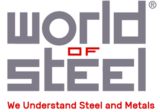Manufacturing Mistakes
Manufacturing Mistakes
Fasteners have one thing in common with all other manufactured products: The better they are made, the better they will perform. Ray Lafferty, director of quality at Semblex Corp. (a fastener manufacturer and distributer), says that several factors impact fastener quality during manufacturing. “Metal decarbonization could occur during heat treatment if the temperature reaches above 700 C or so, and there is not a sufficient protective atmosphere in the furnace,” explains Lafferty.
“This may result in soft threads that could strip out.” Quenching and tempering (or drawing) is one of the most common heat treatment processes for steel fasteners. The fasteners should be tempered within minutes after being removed from the quench and before they are completely cold. Failure to do this may result in quench cracking, premature failure or shorter than normal service life. During the head-forming process, it’s important that the grain flow lines of the metal form in the proper direction.
According to Lafferty, grain lines that sharply move toward the radius of the head-to-shank junction fail to have a good grain flow. This may leave the fastener susceptible to the head breaking off during installation. “We inspect the fasteners early in the manufacturing process for proper grain flow pattern,” notes Lafferty. “Our inspectors boil the sectioned head of the sample fastener with hydrochloric acid and water for 1 minute to bring out the grain so the grain flow can be easily evaluated. All headed bolts and screws used by our automotive customers, for example, must meet the SAE USCAR8 specification for grain flow pattern.” Threads that are rolled too close to the head create increased stress on the head as torque is applied.
Lafferty says that this condition, too, can lead to a head-to-shank failure. Because this flaw also increases radial stress, it can quicken hydrogen embrittlement when it’s present in the fastener. Internal hydrogen embrittlement occurs when hydrogen, absorbed during the fastener plating process, gets trapped in the steel and migrates to stress concentrations along grain boundaries. This can cause sudden catastrophic failure under load, according to Kevin Menke, director of engineering at Fastenal Co. and a member of the ASTM F16 fastener standards committee.
Most threaded fasteners are treated with plating or a protective coating to prevent rust or corrosion, and then tested for such resistance according to ASTM B117 (salt spray fog test). Many fasteners today are mechanically sorted with camera or vision systems, and this process can result in a deterioration of the protective coating. “Every fastener endures some abuse between final testing and installation,” says Lafferty. “As a result, the protective coating can be compromised. This can lead to premature red (iron oxide) rust in the application.” Another common problem is with dip spin coating.
It provides excellent corrosion protection, but can result in driving (bit fit) issues when too much plating fills up the internal drive heads on small screws. “The geometry, material, heat treatment, finish and other factors all play into how well a fastener performs from assembly through the life of the product it is installed in,” says John Medcalf, principal engineer and business lead for Peak Innovations Engineering. “So always treat the fastener like the engineered component that it is.”
